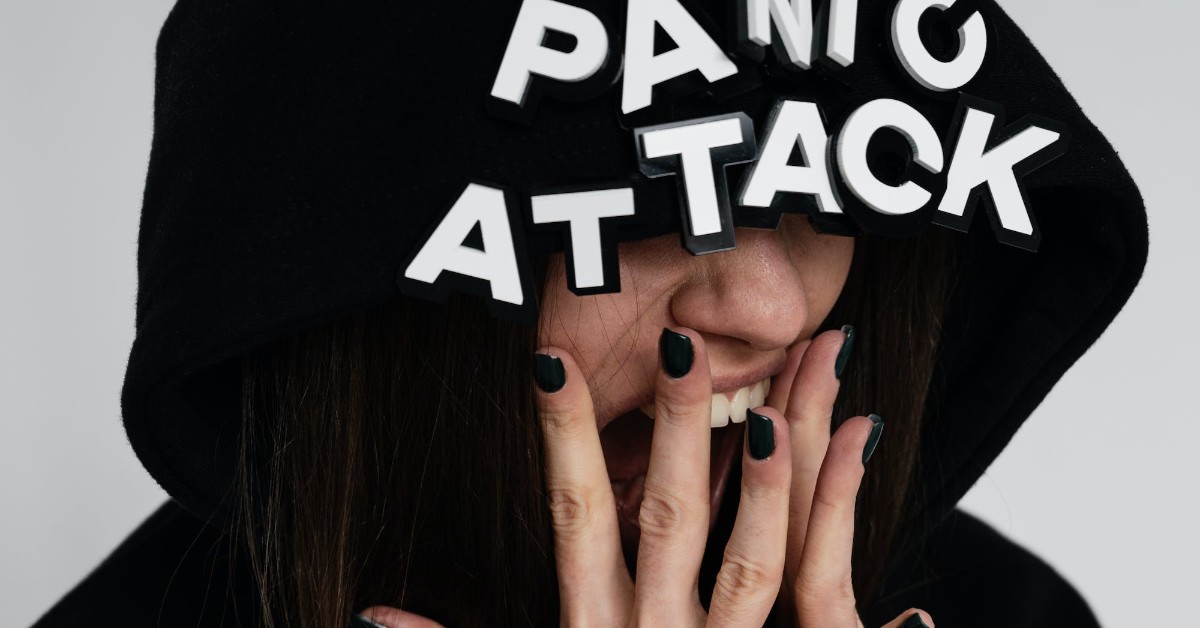
Hello, there! Do you want to know how to help someone having a panic attack? Here is a helpful tool for you.

Observing a loved one experience a panic attack can be a distressing experience. Have you ever found yourself in a seemingly simple situation, only to feel completely powerless? It’s a frustrating experience that many of us can relate to. Despite our best efforts, sometimes things just don’t go as planned. If you’re looking to make the most of your time during an episode, here are some helpful tips to keep in mind.
What is Panic Attack?
According to Wikipedia, panic attacks are sudden periods of intense fear and discomfort that may include palpitations, sweating, chest pain or chest discomfort, shortness of breath, trembling, dizziness, numbness, confusion, or a feeling of impending doom or losing control.
Typically, symptoms reach a peak within ten minutes of onset and last for roughly 30 minutes, but the duration can vary from seconds to hours. Although they can be extremely frightening and distressing, panic attacks themselves are not physically dangerous.
People with panic attacks often report a fear of dying or heart attack, flashing vision or other visual disturbances, faintness or nausea, numbness throughout the body, shortness of breath and hyperventilation, or loss of body control.
How to Help Someone Having A Panic Attack
People who have experienced a panic attack fear that they will experience more attacks, particularly in public, because the causes of these attacks are not always clear. Anxiety and panic episodes are notoriously unpleasant experiences. Many individuals think they’re having a heart attack or some other potentially fatal medical emergency.
There are a number of things you can do (and some you should avoid) to aid a friend or loved one going through a panic episode.
If you’re with someone who’s experiencing a panic attack, it’s important to know how to help them calm down and manage their symptoms.
Here are 8 detailed ways to help someone having a panic attack:
1. Stay calm
The primary and paramount action to undertake is to maintain a composed demeanor. Individuals experiencing a panic attack may perceive a sense of peril, and exhibiting composure can potentially foster a greater sense of safety and stability.
2. Validate their feelings
It’s important to acknowledge the emotions of those around us and let them know that their feelings are valid. It’s understandable to feel overwhelmed or uncertain during difficult times, and it’s crucial to offer support and understanding.
Remember to listen actively and empathetically and avoid dismissing or minimizing their experiences. Let them know that you’re there for them and that they’re not alone. It’s completely normal to experience panic attacks, and it’s important to remember that they will eventually subside.
Don’t let the fear of having another attack consume you – take comfort in the fact that you’re not alone in this experience. Remember to practice self-care and seek support from loved ones or a mental health professional if needed.
3. Ask how you can help
Panic attacks can be a challenging experience, and it’s important to remember that everyone copes with them differently. It’s always a good idea to ask the person what kind of support they need from you during these moments. When it comes to supporting someone through a tough time, it’s important to remember that everyone copes differently. Some individuals may appreciate having a listening ear and a comforting presence, while others may prefer solitude to process their emotions. It’s crucial to respect each person’s unique needs and preferences in order to provide effective support.
4. Help them focus on their breathing
Instruct the individual to take deliberate, deep breaths and encourage them to do so. You can accomplish this goal by counting with them or by directing them through various breathing techniques.
5. Use grounding techniques
Asking the person to characterize what they see, hear, feel, and scent around them can assist the person in centering their attention on their senses. They may experience being more present and less overwhelmed as a result of this.
6. Offer physical comfort
Offer the individual some form of physical comforts, such as a hug or just grasping their hand, if they are comfortable with it. They may experience a greater sense of connection and support as a result of this.
7. Avoid minimizing their experience
Don’t tell the person to “just relax” or “get over it.” Panic attacks can be very intense and overwhelming, and minimizing their experience can make them feel worse.
8. Encourage them to seek professional help
If the person is experiencing panic attacks frequently, encourage them to seek professional help. A therapist or counselor can work with them to develop coping strategies and manage their symptoms.
How to Help Someone Having a Panic Attack: FAQs & Answers
Should I touch or hug someone having a panic attack?
It’s important to respect the person’s boundaries and preferences. Some people may find physical touch helpful, while others may find it overwhelming or triggering. Ask the person if they would like a hug or any other form of physical comfort before offering it.
What should I avoid doing when someone is having a panic attack?
Here are some things to avoid when someone is having a panic attack:
- Don’t dismiss their feelings or tell them to “calm down.”
- Don’t criticize or judge them for having a panic attack.
- Don’t try to force them into doing anything they don’t want to do.
- Don’t make any sudden movements or loud noises that could startle them.
- Don’t leave them alone unless they ask for privacy.
What are some relaxation techniques I can suggest?
Deep breathing, progressive muscle relaxation, and guided imagery are all effective relaxation techniques that can help someone manage their anxiety and panic symptoms. You can also suggest mindfulness exercises, such as focusing on the present moment and paying attention to physical sensations.
Should I try to distract the person?
While distraction can sometimes be helpful, it’s usually best to support the person through their panic attack rather than trying to distract them from it. You can encourage them to focus on their breathing and reassure them that they will get through it.
Conclusion
Keep in mind that everybody has a distinctive way of dealing with panic attacks, so the solutions that help one individual might not help another. During a panic attack, it is essential to show support for the individual and do what you can to make them feel as though they are safe and in control.
We hope you have learned how to help someone having a panic attack.
Recommended:
How to Help Someone With Depression (All You Need To Know)
11 Tips to Help You Avoid Emotional Driving (2023 Guide)




